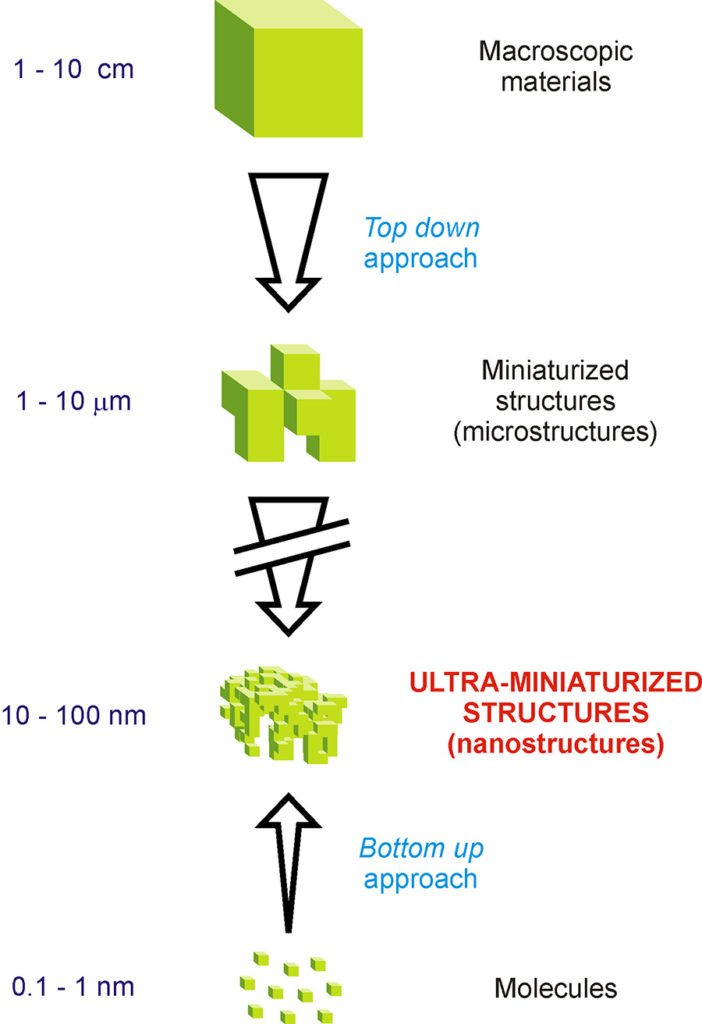1.4. Miniaturization
Since the dawn of civilization, technology has dealt with materials of various kinds, processing and forging them with increasingly sophisticated tools to transform them into useful objects. The possibility of having molecules with desired characteristics now allows us to think of a technology that operates on a molecular level, that is, at the nanometer scale; this is nanotechnology. To better understand the essential terms of this topic, let us consider the issue of miniaturization.

The first electronic computer was built in 1946 by the University of Pennsylvania at the request of the United States Army. The computer was called ENIAC and occupied the space of an apartment (180 square meters), weighed 30 tons, consumed 200 kW, contained 18000 thermoionic valves, 1500 relays, wires, junctions, and broke down very frequently. Its computing power was negligible compared to that of today’s smartphone. How did the revolution that led to current computers happen? The answer is in an increasingly enhanced miniaturization that caused a reduction of the size of various components and, more frequently, their replacement. In the race towards miniaturization (Fig. 7), a top-down approach, that consists of working macroscopic pieces of materials with special techniques, was followed. This approach, however, has intrinsic limitations; in practice one cannot easily reach below one hundred nanometers. Although it is already a very small size (about a thousandth of the thickness of a hair), «there’s plenty of room at the bottom», as physicist Richard Feynman observed in his famous lecture (which we will talk more extensively about in Chapter III) alluding to the dimensions of atoms and molecules (Feynman 1960). To continue with the miniaturization process, alternatives to those used so far needed to be found; among these, the so-called bottom-up approach is particularly promising. According to this approach, ultra-miniaturized systems are obtained from molecular components that are programmed to integrate from the structural point of view and interact from the functional point of view, according to the principles of supramolecular chemistry.
Nature is an astounding master in the process of bottom-up construction. First, nature has prepared a great number of precisely programmed molecules, which in the course of evolution have given rise to all the molecular devices and machines that allow us to walk, eat, talk, see, think; in other words, live. All the biological devices and machines and – rising in the scale of complexity – cells, tissues, organs, systems, and finally the human body, are formed in nature by self-assembly (i.e. by spontaneous assembly) of simpler components which are appropriately programmed. Going up the ladder of complexity step by step, nature has thus reached that extreme wonder that is a human being.
In their laboratories, scientists are not able to climb the scale of complexity from the atom to man. They are capable of manipulating life quite profoundly, but they are not able to construct it, even in its most basic form. However, scientists have learned to create molecules programmed to construct nanostructures from the bottom up, that are capable of performing functions upon electrical, chemical or light stimulation. In other words, they have created devices and machines at the molecular level which, although much simpler than those found in living organisms, are equally interesting from a scientific point of view and potentially useful for many applications.


